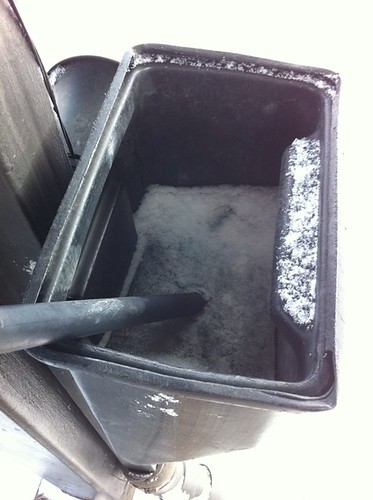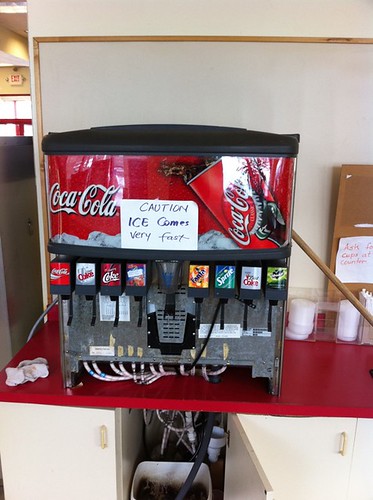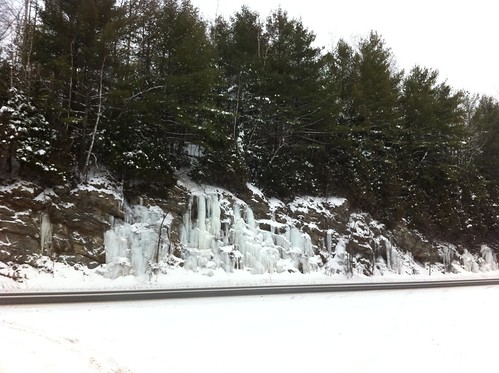
Last summer, I remember reading somewhere that the Allegheney River is more likely to freeze over than the Monongahela River, in the Pittsburgh area, because it comes from the north where it is colder. I was somewhat unsure if this was true, and as it turns out, the Monongahela River is shallower than the Allegheney (at least after being modified with locks and dams), and also comes from some high, cold mountains in West Virginia, so the story was indeed not based in fact. In truth, neither of the rivers ice up all that often in the modern day (though more so than when early last century when water from quenching of steel was poured into the Monongahela, raising its temperature well over 100 degrees at times). January has been cold this year and the Monongahela is indeed partially iced up.

Driving home to Vermont, I crossed a land locked in winter's deep freeze. Indeed it was so cold in Pennsylvania's mountains that even the soap-water used to clean car windows at gas stations was frozen solid.

Indoors I found this sign to be true on several levels...

Back in Vermont, I woke up one morning in Middlebury to a temperature of -6 Fahrenheit. Like any water-obsessed naturalist, my first thought was that I had to go check out the river.(It is called Otter Creek, but to someone from a dry place, it is definitely a river).

Although most of the river is iced over at this point, the power and speed of the water near the falls keeps the water open, no matter how cold it gets. Liquid water can generally not be cooled below freezing, so the water is almost 40 degrees warmer than the air. This causes it to steam, and of course the steam and spray freezes on anything it touches. The ice formations are quite impressive, and will only become more so as the cold of midwinter continues.
As I mentioned in a recent post about Pittsburgh, groundwater also does not freeze, and keep seeping out all year. A lot of roadcuts have seeps in them, and when it is this cold, massive ice formations form along the road.

This one was on Highway 7 near Salisbury, Vermont.
The coldest temperatures of the year have not been reached. Today we are experiencing a mix of snow and sleet, but by this weekend the forecast is for an arctic blast with lows near -10 and highs in the single digits. Needless to say, there should be even more ice to check out. The bays and inlets of Lake Champlain are freezing, even near Burlington, and I hope to get some pictures of these formations when the temperature moderates a bit.

Interesting, but in the future, please spell Allegheny correctly. Thanks
ReplyDeleteKind of silly to make this sort of comment on a post that is a year and a half old, but maybe I'll change it later. Meanwhile... you forgot a period, can you add it in please?
ReplyDelete